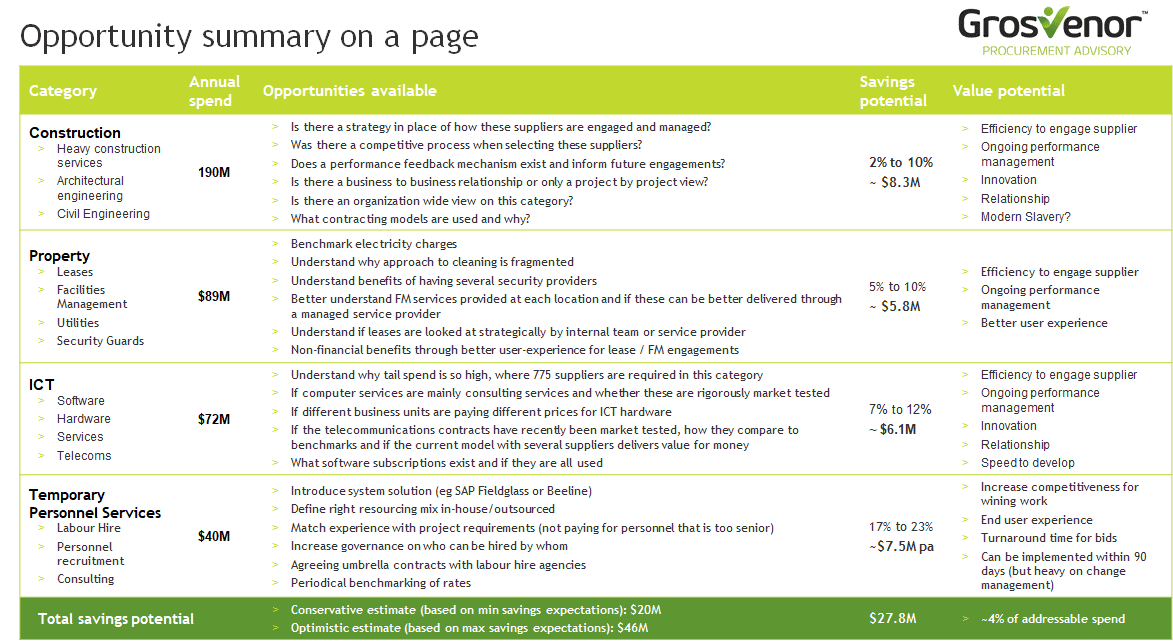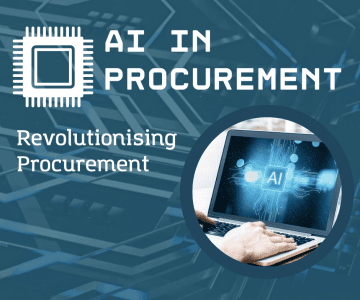Where are the procurement “quick wins” for an incoming CPO?

The Situation: Quick wins needed to gain trust – identifying where to save money
As a new CPO you need to make an impact. Fast. Ideally within 100 days. This is important to win trust. Trust from the wider business that procurement will be better this time round. Better, in the sense of being able to help the organisation deliver the strategic goals. An enabler, rather than a roadblock. A coach, not a police offer.
All, good. Nothing new here, all of the above remained the same as five years ago. Not just that, often even how we design the roadmap to gain that trust remains the same: trying what we know worked elsewhere. Is this good enough?
We find, much to the annoyance of incoming CPOs, that the ability to deliver savings still trumps all other initiatives. Yes, modern slavery is important, yes, including social targets in your procurement strategy is key, yes educating the rest of the business what procurement is, is important too. But make no mistake, those are hygiene factors. To implement them costs time and money. And often we are not afforded this opportunity from the get go. So, it’s down to making an impact by reducing supply risk and cost.
The challenge: How do you quickly make sense of data that is of the lowest quality?
Incoming CPOs often find themselves in a situation where there is no reliable visibility of spend. We’ve seen as many as eight finance systems in use at a single client (don’t get me started on credit card data).
- How do you quickly make sense of data that is of the lowest quality?
- And once you have pretty spend dashboards: How do you turn these into an action plan for savings?
The solution: Combining machine learning and good old human experience
1. Machine learning to deal with low quality spend data
If your spend is not categorised into a procurement taxonomy, don’t worry. Machine learning is your best friend. Nowadays, you don’t have to rely on manual categorisation of spend. You don’t need to invest hundreds of thousands into a procurement system. No need to hope that people chose the right GL account instead of the one where money was left. No more assumptions that a single supplier only delivers a single good or service.
Machine learning can predict the spend category (to UNSPSC or your own taxonomy) within a couple of hours – for all invoices over the past three years. And that simply based on supplier name and free text out of your accounts payable ledger (or ledgers, if across multiple systems). Or if you don’t have that, based on invoice scans. Yes, it can read invoice pdfs, line by line and predict what category the purchases fall into.
2. Next stop: Dashboard visualisation
PowerBi is Microsoft’s new wunderkind. Imagine Excel spreadsheets on steroids. Click on one chart to make all other charts refresh and filter, say by a specific cost center, or supplier, or financial year, or spend category. All too easy and available to the whole team via a webbrowser interface.
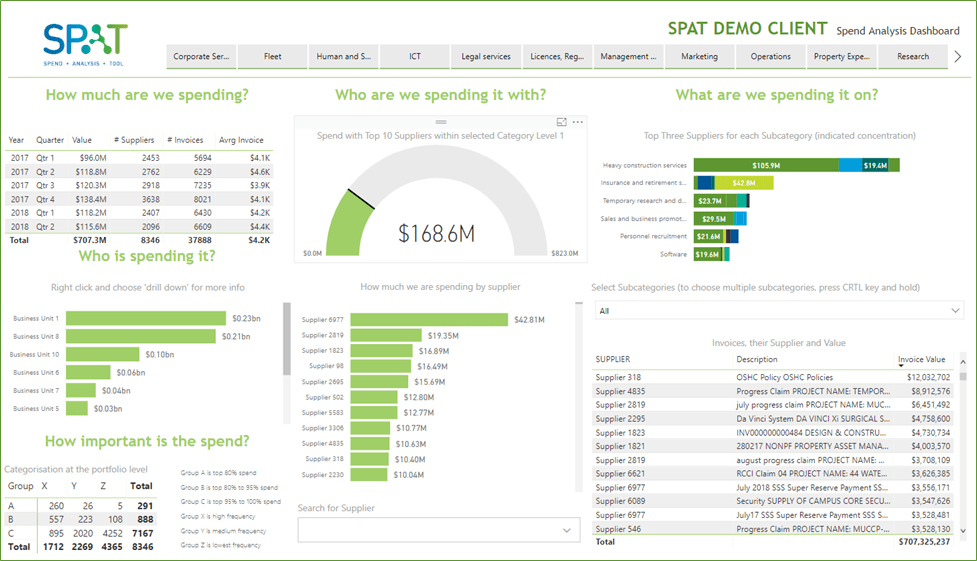
3. Elbow grease: Pretty dashboards don’t cut it
Up to here, everything is the magic work of data scientists. Not procurement professionals. Sure, the CFO will love seeing where all of that expenditure goes. But it poses tricky questions: “What can we do about it? How can we save money?”. And these are questions machines can’t answer. Years of experience as a procurement professional are required here.
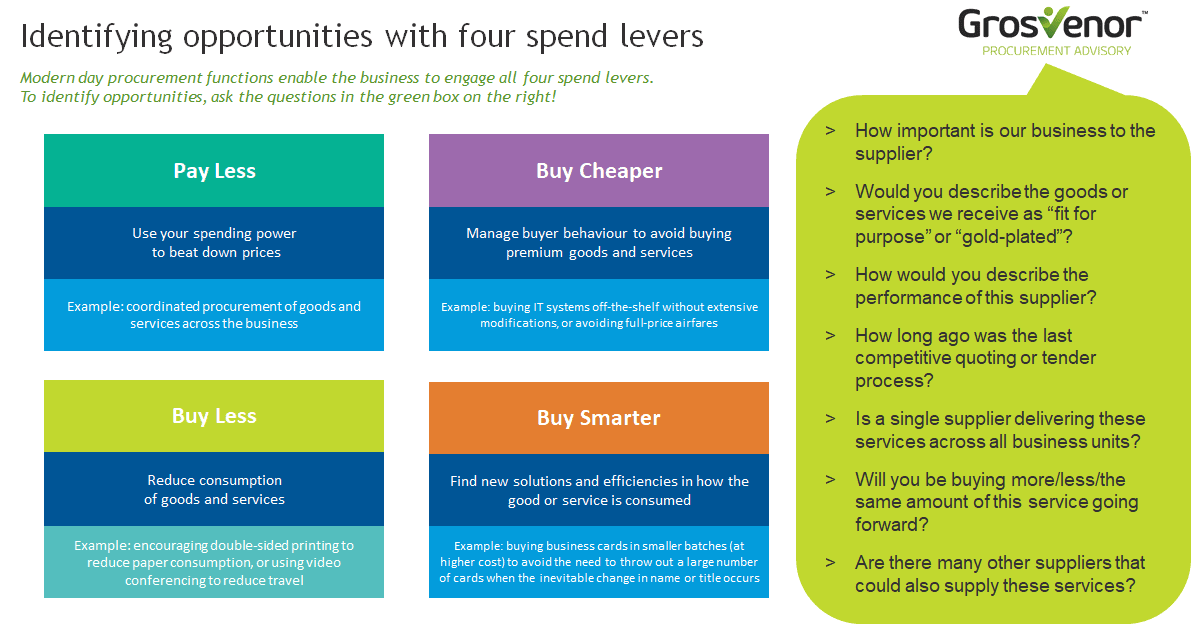
It’s about finding the right commercial models, aggregating the right spend (Pay Less), buying fit for purpose instead of gold-plated (Buy Cheaper), demand management (Buy Less) and process efficiencies (Buy Smarter). Great spend dashboards are a necessary tool for that, but they are not sufficient to identifying where procurement’s quick wins are. Good old experience is required. So how do we go about it?
A good start is to ask about each subcategory or even each of the top 10 suppliers in a subcategory the questions in the green speech bubble in the picture above. Further questions flow from looking at your spend dashboards, as shown in the blue speech bubble below:
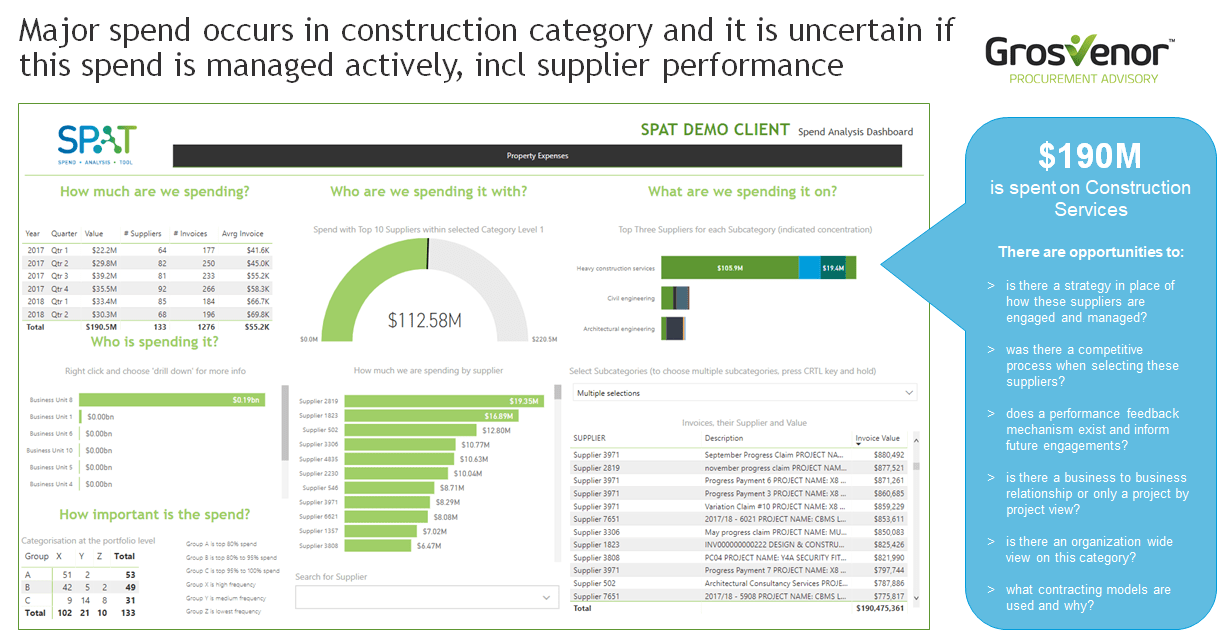
Then come up with a scoring regime and prioritise your categories and decide which ones to tackle first. If you can add an educated guess of what a sensible savings target could look like, you have just generated your business case and your roadmap for the next 12 months. And identified all quick wins. Congratulations.
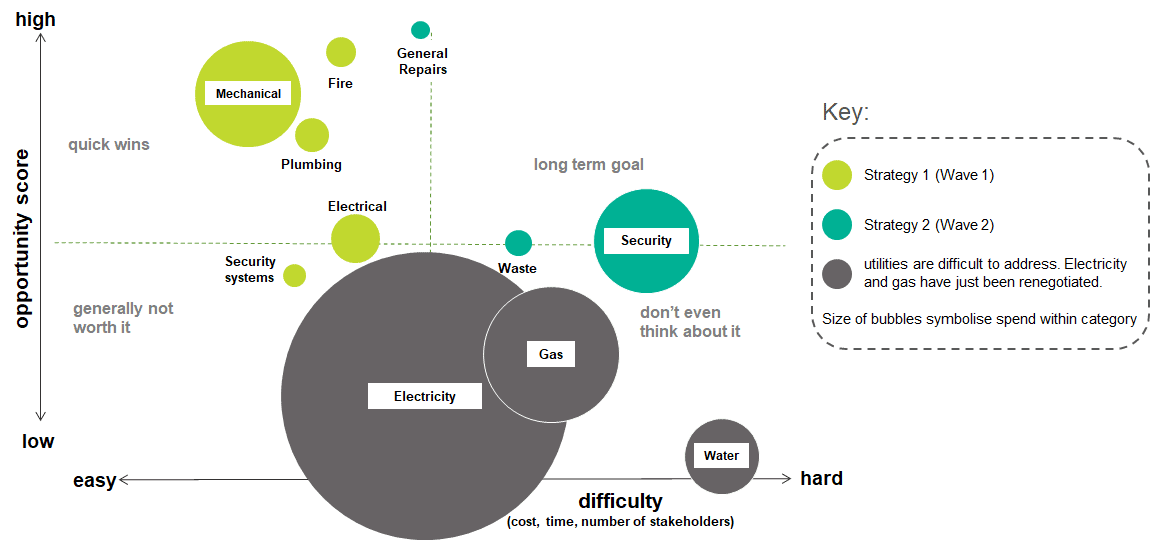
Stop for a minute: The data doesn’t hold all the answers
It’s great to have useful spend analysis. But data can only ever tell half the story. The other puzzle piece is held by the people in your organisation dealing with suppliers on a daily basis. While you would have consulted with them to answer the questions above anyway, it is paramount that the identified opportunities and initiatives are tested and validated with them. We obviously don’t want to look like a fool suggesting an initiative that was tried before and didn’t work.
A roadmap for quick wins
Pull it all together into a single slide. What can be done in the top four or five spend categories and what is the likely financial impact? And of course the additional value that can be created along the way. And here it is, your roadmap for quick wins!
